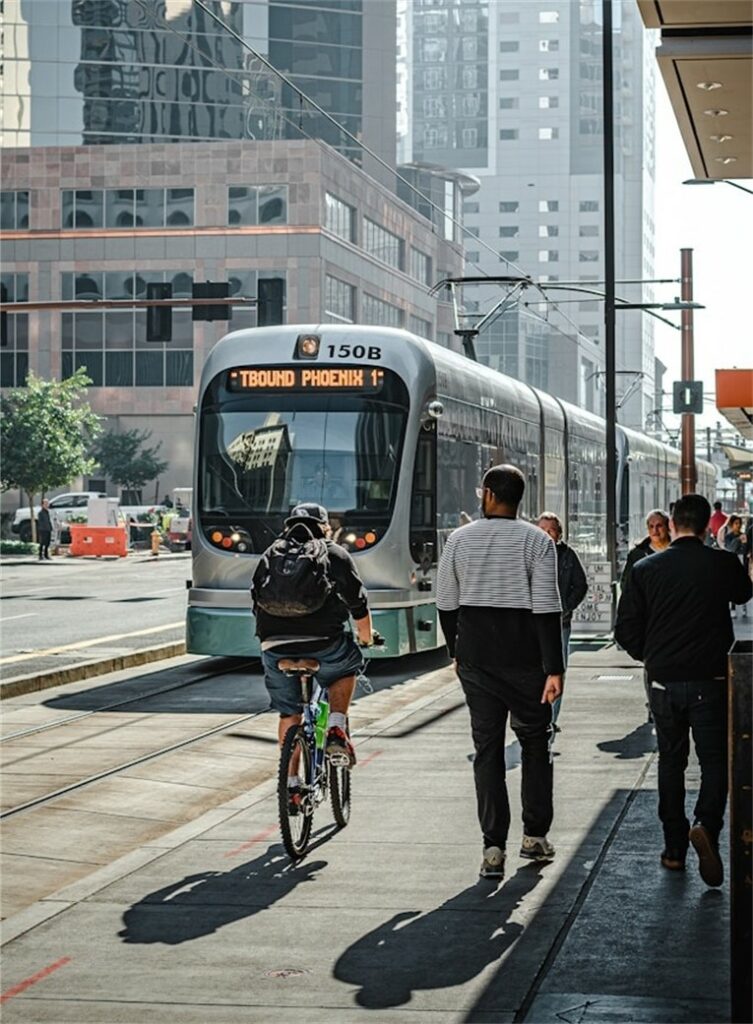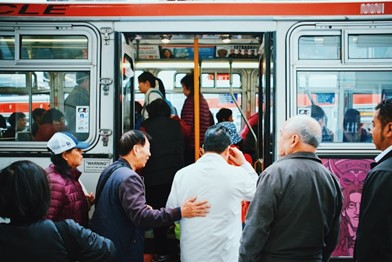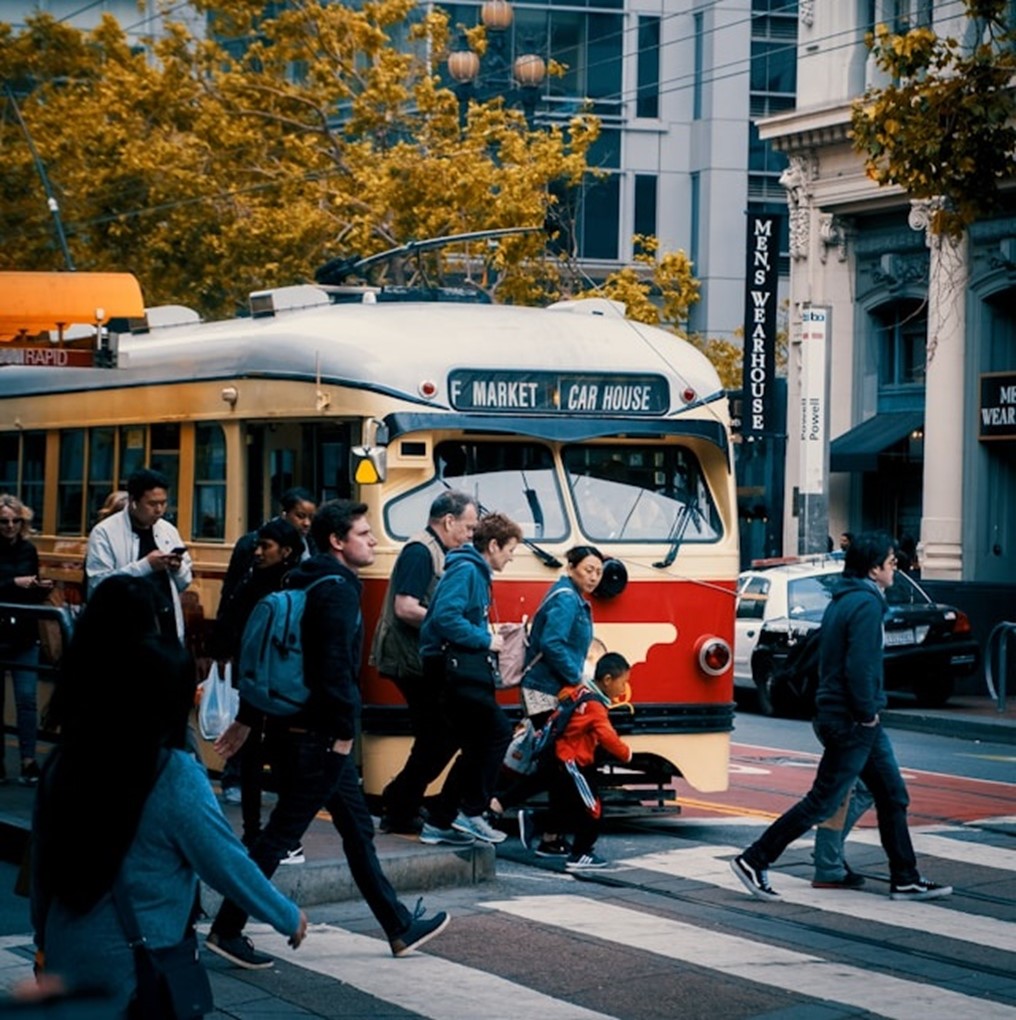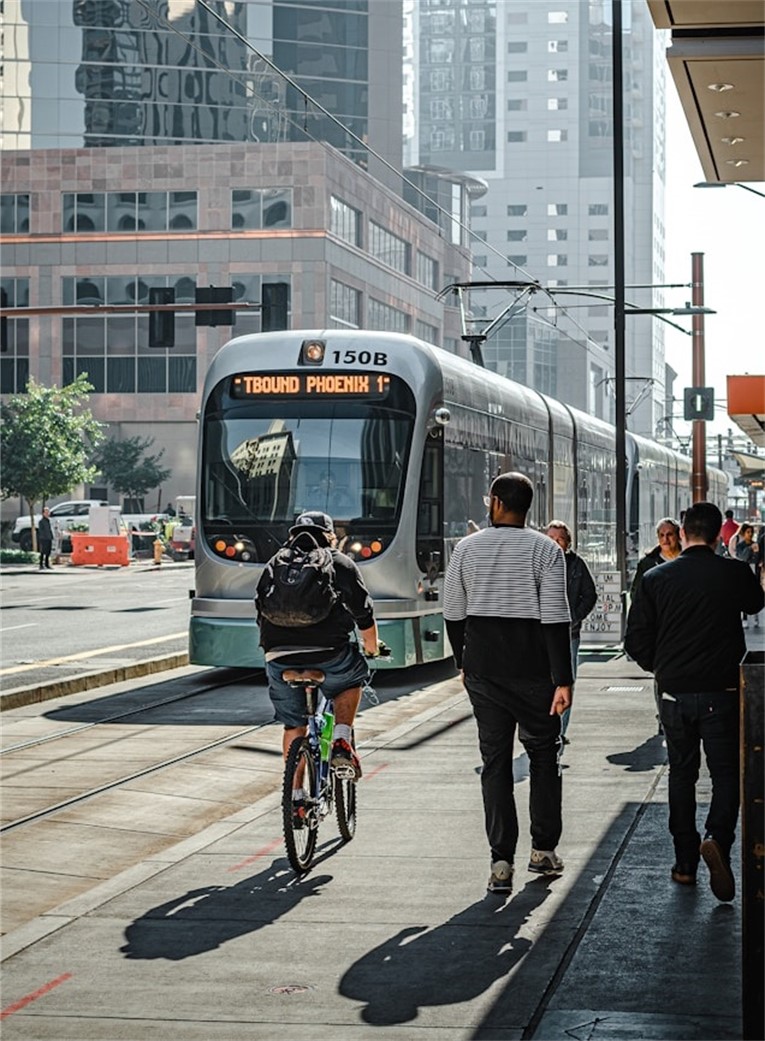
Transit-Oriented Development (TOD) empowers real estate development firms to craft dynamic, sustainable communities centered around key transportation hubs, like bus stations, train terminals, and subway stops. This approach not only fosters connectivity but also transforms urban spaces into thriving, integrated neighborhoods that blend convenience with modern living.
TOD aims to create environments that encourage the use of public transportation, reduce reliance on personal vehicles, and promote environmental sustainability. The following article explores the benefits of Transit-Oriented Development, the challenges, and how it impacts community development and sustainability.
The Roots
The concept of TOD is not new. Its roots can be traced back to the early 20th century, when cities like New York and London began to develop public transportation networks and integrate them into urban planning. However, the modern resurgence gained momentum in the late 20th century, especially in response to rising concerns about traffic congestion, air pollution, and the environmental impact of sprawling urban areas.
It draws inspiration from the successful integration of public transit with urban infrastructure in cities like Tokyo, Paris, and Hong Kong, where dense, mixed-use developments have flourished around public transportation. In these cities, this is a central element in the design and planning of the urban environment.
The Core Principles
At its core, TOD revolves around the creation of dense, mixed-use neighborhoods centered around transit stations. The key principles include:
Proximity to Public Transit: TOD developments are strategically located near major public transit hubs, such as metro, bus, or light rail stations, to encourage the use of public transportation.
Mixed-Use Design: They integrate a variety of uses within walking distance, including residential, retail, office, and recreational spaces. This reduces the need for long commutes and fosters a more vibrant, connected community.
Walkability and Pedestrian Infrastructure: TOD focuses on creating pedestrian-friendly environments with sidewalks, bike lanes, and green spaces. This encourages people to walk or bike to and from transit stations, further reducing reliance on cars.
Sustainability and Green Design: This method incorporates sustainable design elements, such as energy-efficient buildings, green roofs, and stormwater management systems, to minimize the environmental impact of development.
The Benefits
The integration of public transit with land development companies creates a wealth of benefits, enhancing the lives of individuals while driving growth and vitality within entire communities.
Environmental Sustainability
One of the primary motivations behind this planning is environmental sustainability. By focusing development around public transportation, it reduces the reliance on personal vehicles, which in turn helps reduce traffic congestion, air pollution, and greenhouse gas emissions. Public transit is significantly more energy-efficient than private cars, especially in densely populated areas.
Moreover, projects such as these often incorporate green building techniques and renewable energy sources, such as solar panels and rainwater harvesting, further reducing their environmental impact. These developments also encourage walking and cycling, promoting active transportation modes that have a lower carbon footprint than cars.

Reduced Traffic Congestion and Improved Mobility
As urban populations grow, traffic congestion becomes an increasingly pressing issue. TOD alleviates some of this congestion by providing residents and businesses with convenient access to public transit, reducing the number of cars on the road. In addition to benefiting the environment, this also improves the quality of life for those who live in or near these hubs by making travel more efficient and reducing time spent in traffic.
Public transit networks often serve areas that are not easily accessible by car, such as underserved neighborhoods or areas with limited parking. This increased connectivity boosts economic opportunities and improves mobility for people who may not own a car or prefer to use public transportation.
Economic Growth and Job Creation
Transit-Oriented Development fosters economic development by creating vibrant, mixed-use neighborhoods that attract both businesses and residents. The increased demand for housing and services near transportation hubs can lead to higher property values, benefiting property owners and developers. Additionally, the presence of retail and commercial spaces within these areas creates jobs, from local shops and restaurants to offices and service providers.
In areas where public transit options are limited, real estate development can stimulate local economies by increasing foot traffic and encouraging investment in infrastructure. The combination of residential, commercial, and recreational spaces also promotes a 24-hour economy, as people are more likely to stay in the area for work, leisure, and shopping.
Improved Quality of Life and Social Equity
By offering a variety of housing options and reducing the need for cars makes urban living more affordable and accessible to a diverse range of people. It also promotes social equity by providing equitable access to public transportation for all residents, regardless of income level or car ownership.
Mixed-use living areas are often designed to prioritize inclusivity and community engagement, with parks, public spaces, and recreational facilities that foster a sense of belonging and community. These spaces create opportunities for social interaction and improve the overall quality of life for residents.

Challenges
Despite its many benefits, TOD faces a range of challenges that can impact its success and implementation.
Costs
Building projects around transit hubs often requires significant upfront investment in infrastructure, such as upgrading transportation systems, building pedestrian-friendly walkways, and installing green spaces. Additionally, land around these areas is often expensive, which can make development financially challenging, especially in high-demand urban areas.
Developers must balance the cost of development with the long-term value of TOD projects. Public-private partnerships and government incentives, such as tax breaks or funding for infrastructure improvements, can help offset some of the financial burdens.
Community Resistance and Gentrification
One of the main concerns with TOD is the potential for gentrification, where rising property values and rents in transit-oriented neighborhoods push out low-income residents. As demand for housing near transit hubs increases, it can lead to displacement and a loss of affordable housing options.
To mitigate these risks, planners must be proactive in ensuring that their projects will provide affordable housing options. Policies that encourage mixed-income housing and protect existing residents from displacement are critical to creating equitable developments.
Balancing Density and Livability
While density is a key feature, achieving the right balance between density and livability can be challenging. Overcrowded developments can strain public services, such as schools, healthcare, and utilities, and lead to decreased quality of life for residents. Developers must ensure that these developed areas are designed with the needs of the community in mind, with adequate amenities, green spaces, and public services to support growing populations.
The Future
As cities continue to grow and evolve, the demand for Transit-Oriented Development is expected to increase. With the rise of environmental awareness, traffic congestion, and urban sprawl, presents a sustainable and efficient solution to modern urban challenges. With the right planning, policies, and investments, TOD can contribute to the creation of more livable, equitable, and sustainable cities.
In the years ahead, commercial development firms, city planners, and transportation authorities will continue to refine development models to better meet the needs of diverse communities while driving economic growth, fostering environmental sustainability, and enhancing quality of life.
Ultimately, the evolution of real estate development goes beyond simply building around transportation hubs—it’s about reimagining urban design to create more connected, resilient, and sustainable communities.


No comments.